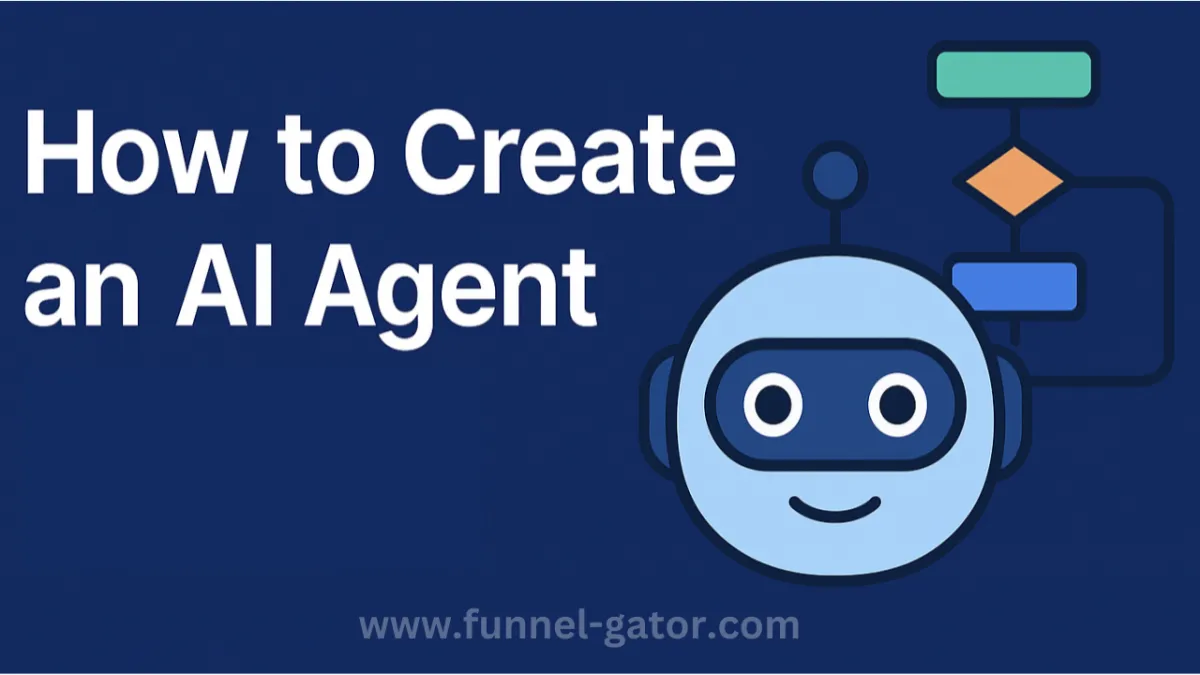
How to Create an AI Agent (Without Being a Tech Genius)
Imagine having a digital assistant that can schedule your meetings, write emails, help you code, or even play chess—all while you sip your morning coffee. Sounds futuristic? Well, welcome to the present. That magical sidekick is called an AI agent.
In this beginner-friendly guide, we’ll walk you through the exciting journey of building your very own AI agent—without any complicated jargon. Whether you're a tech newbie or just AI-curious, you’ll learn what you need, how to start, and where to go next.
🌟 What Is an AI Agent?
At its core, an AI agent is a computer program that can think, plan, and act on its own to achieve a specific goal. Think of it as a digital intern that can learn, adapt, and sometimes even surprise you.
🧠 Real-Life Story: My First AI Assistant
A few years ago, I was drowning in emails. So I decided to try my hand at building a simple AI agent to filter spam and draft replies. I used a basic natural language processing tool and some trial-and-error logic. Within a week, I had an agent that reduced my email load by 70%! And the best part? I didn’t have a computer science degree.
🧰 What You Need to Build an AI Agent
Before we dive into the steps, here’s what you’ll need in your toolkit:
A programming language like Python
A platform for machine learning (e.g. OpenAI, LangChain, or Hugging Face)
Access to an AI model (e.g., GPT or BERT)
A place to host your agent (like Replit, Google Colab, or your local computer)
🪜 Step-by-Step: How to Build Your First AI Agent
Let’s keep it simple. Here’s a 6-step process to go from idea to digital genius.
Step 1: Define the Goal
Ask yourself: “What problem will my AI agent solve?”
Examples:
Answer customer service questions
Analyze news articles
Summarize long documents
Automate social media posts
💡 Tip: Start small. Don’t try to build Jarvis from Iron Man just yet.
Step 2: Choose the Right Tools
Pick your programming environment. For beginners, we recommend:
Python — Simple syntax and tons of AI libraries
OpenAI API — For natural language tasks
LangChain — If you want to chain together multiple agents
You’ll also need some basic tools for working with machine learning and natural language processing.
Step 3: Train or Connect to an AI Model
Now you need an AI brain.
Two options:
Use a pre-trained model like GPT-4 from OpenAI
Train your own model using frameworks like TensorFlow or PyTorch
For most beginners, option 1 is faster and just as powerful.
Step 4: Build the Agent’s Logic
Here’s where the magic happens. You’ll write a program that:
Takes input from the user
Sends it to the AI model
Processes the response
Takes an action (like replying, summarizing, or storing info)
Here’s a simple example in Python:
import openai
openai.api_key = "your_api_key"
def ai_chat(prompt):
response = openai.ChatCompletion.create(
model="gpt-4",
messages=[{"role": "user", "content": prompt}]
)
return response.choices[0].message["content"]
print(ai_chat("Write a tweet about climate change"))
Step 5: Test, Test, and Test Again
Run your agent through different scenarios. Tweak the logic. Test the outputs.
🔄 Feedback Loop: AI works best when you continuously improve it. If your agent makes a mistake, figure out why and fix it.
Step 6: Deploy and Use It!
Once it’s working the way you want, you can:
Host it on Replit
Package it into a chatbot
Connect it to your website or Slack
Even sell it as a service
🎉 Boom. You just built your first AI agent.
🧭 Advanced Ideas for Your AI Agent
Once you're comfortable, here are a few fun directions you can explore:
Create a multi-agent system where different agents talk to each other
Use memory and retrieval (like with vector databases) so your agent remembers past chats
Plug in real-time data like stock prices or weather forecasts
🙋♂️ But… Is It Worth It?
Absolutely. AI agents are already changing how we work, learn, and create. Whether you’re automating your job or launching a startup, the skills you gain building agents are future-proof.
And with tools like OpenAI, LangChain, and Zapier AI, you can get started today with little or no code.
🔚 Final Thoughts
Creating an AI agent might sound like rocket science—but it’s more like building with LEGO once you understand the pieces. With the right tools, mindset, and a bit of curiosity, you’ll be amazed at what you can make.


